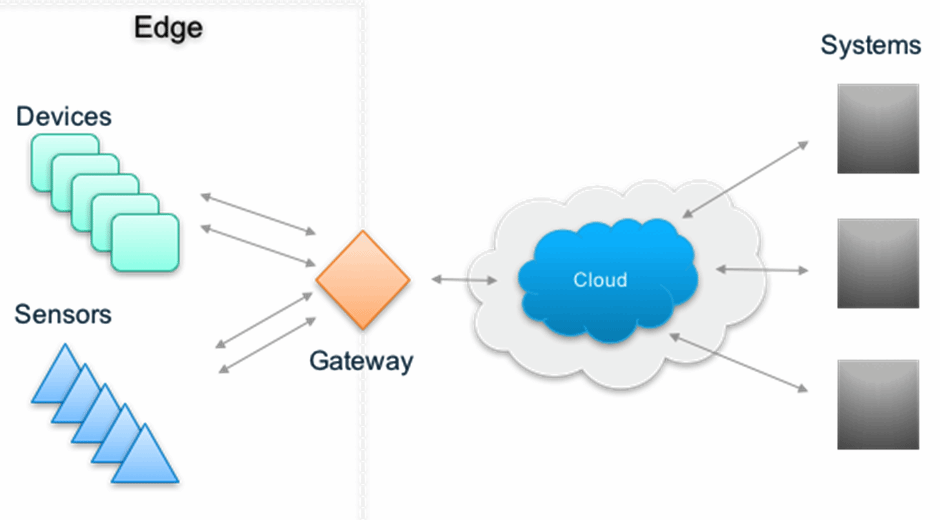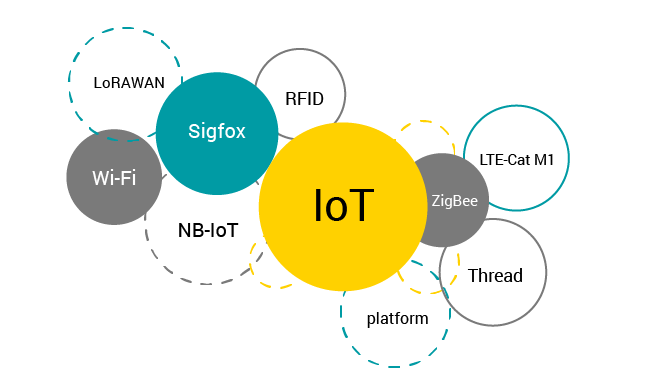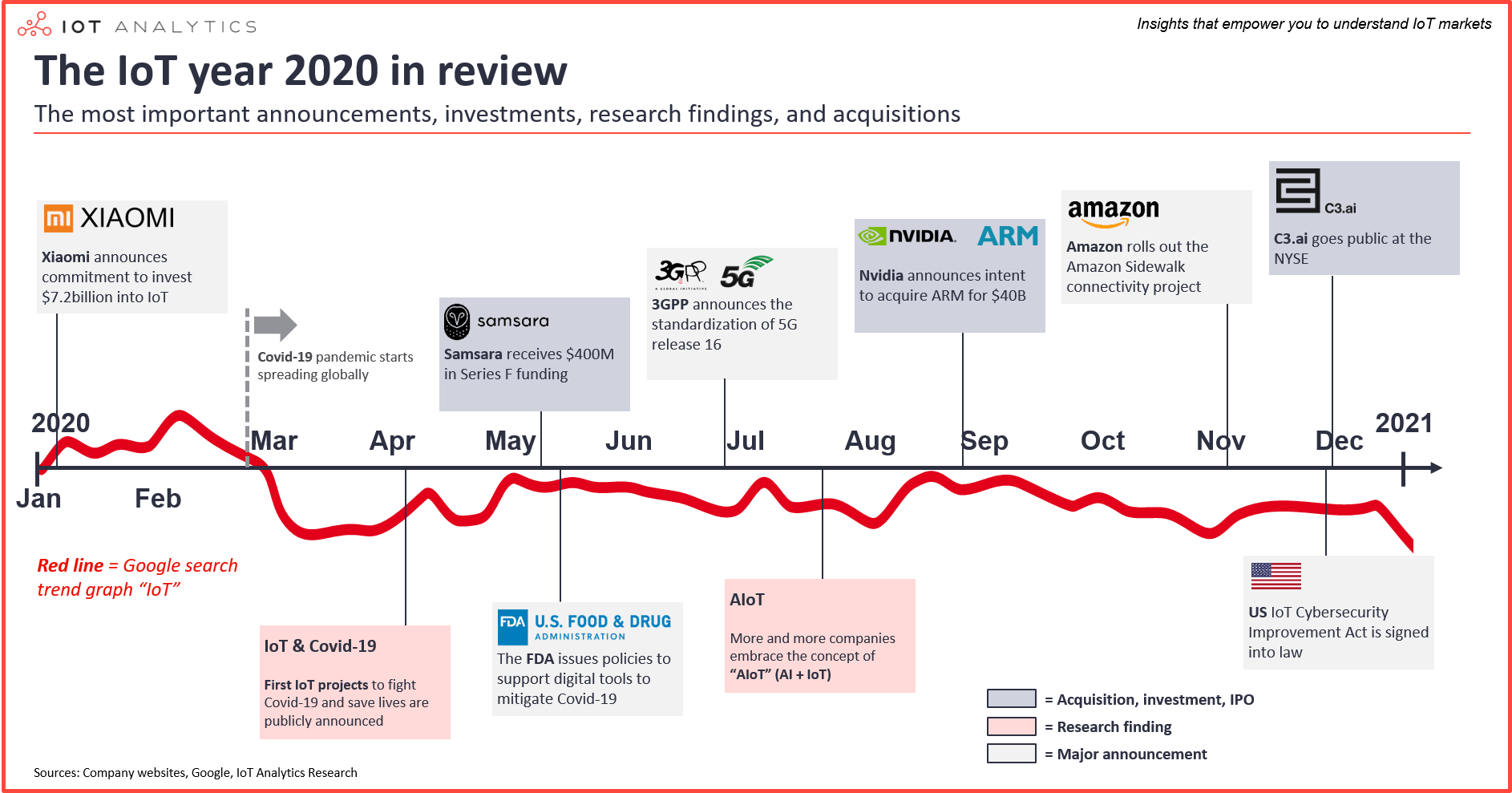August 1, 2022
Software Development for IoT and Smart Solutions (UPDATE July 2023)
In this article:
The new era of IoT developmentIoT software engineeringThe Role of IoT in Software DevelopmentWhat are the software developed for IoT?IoT programming languagesIoT sensors as a way to collect dataExamples of IoT for Smart Solutions:General trends for futureThe new era of IoT development
Today, it is very easy to name multiple devices as IoT because so many things and devices influence our lifestyle - from smart locks at home to innovative vehicles that provide us the safest and shortest way. In this article we show you that IoT went to our homes and lives, and why we need more of it in the future.
IoT software engineering
First we should define the recent wave of IoT development services. IoT stands for Internet of Things. IoT devices give you capability to automate various business operations, including everyday activities. Device integration can include connecting mobile phones, TV, smartwatches, laptops and sensors - such as accelerometers or gyroscopes - with one another. IoT infrastructure and devices must communicate efficiently to make the devices operational for business and consumer use cases. These devices include actuators, wireless sensors and software - just like smartphones that we are using every day for multiple purposes.
The systematic creation of IoT infrastructure utilizing a combination of software and hardware solutions is referred to as IoT software engineering. Intuitive user interfaces and visual representation are used in IoT software engineering to interpret data obtained from sensors and make it make sense for practical applications.
“IoT devices give you the capability to automate various business operations, including everyday activities.”
Especially in this more digital era, automation is undoubtedly the best aspect of IoT devices. The main thing is that it can be found practically anywhere there is internet access, and we all know that number is increasing daily. Anyone with a mobile device, laptop, or computer can connect to a vast array of sensors. In order for the user to see the machine operating, the IoT infrastructure must effectively connect with the devices. IoT development services are quite beneficial in the modern world for these and other reasons. Many businesses are participating in a new trend in the sector by providing end-to-end IoT solution development services from conceptualization through implementation, testing, and deployment.

IoT Architecture, https://www.techtarget.com/iotagenda/feature/How-to-build-an-effective-edge-IoT-architecture
The Role of IoT in Software Development
The main purpose of IoT is to create an ecosystem that connects everything. An ecosystem where everything is connected to each other is known as the Internet of Everything.
We will find many combinations of common technologies such as radio frequency indicators (RFID), microcontrollers, sensors, global positioning systems (GPS), satellite technology, etc.
However, IoT in web development was previously more complex than web development and architecture. IoT web development has to deal with a lot of data, security, excessive communication, reliability issues, and so on.
IT specialists distinguish two main types of IoT software: Enterprise or Industrial IoT and Consumer IoT. The distinction between Consumer IoT and Industrial IoT is mainly in the applications, devices, and technologies used to achieve a purpose. Examples of Industrial IoT devices are beacons, RFID Tags, sensors, etc, while consumer IoT devices include wearables, healthcare devices, connected cars, and smart homes.
What are the software developed for IoT?
A widely popular OS for IoT systems, Raspbian is optimized for Raspberry Pi hardware. The OS is easy to use and compiles more than 35,000 packages. Arm Mbed OS. This OS is an open source OS that meets all the requirements for IoT systems.

Technologies behind the Internet of Things, https://www.avsystem.com/blog/iot-technology/
IoT programming languages
For creating IoT applications, choosing the appropriate programming language is equally essential. The code must be brief and simple to compile due to the minimal resources available. A collection of IoT-based programming languages is shown below:
- C and C++. Both well-known programming languages were created with hardware in mind.
- Python. Because it can handle data-intensive applications, Python is an excellent fit for IoT applications.
- Java. Java, also referred to as the mobile programming language, is suitable for Internet of Things (IoT) devices and is interoperable with many peripheral devices.
IoT sensors as a way to collect data
For effective data collection from individual devices, it is necessary to use the appropriate sensors. They are responsible for receiving and encoding stimuli affecting machines, which in the form of information can be sent further. And also allow for immediate detection of irregularities and errors without the need for inspection by physical workers.
Some of the most common sensors used in machines include:
- Proximity sensors, determine the distance of the machine from other objects
- Capacitive sensors, identify different types of materials
- Temperature sensors, detect when specific objects are heated (or cooled)
- Optical sensors, which react to movement using a light beam
- Ultrasonic sensors, which measure distance using sound waves
- Pressure sensors, which measure resistance
- Strain gauge sensors, which measure weight and pressure
Examples of IoT for Smart Solutions:
Smart city solutions of IoT focus on developing future cities that promote economic development, improve infrastructure & environment, and digitally optimize public assets. A smart city is a collection of billions of smart devices that collects and shares information over a wide network spread across a city.
- Smart City - The parking space detection system was implemented by the city of Wroclaw in conjunction with T-Mobile. It is an innovative system that allows residents to receive information about where they will find a free parking space, where that parking space is occupied.
- Smart Agriculture - Spark Control is a good solution when it comes to greenhouses. Spark Control and EMBIQ developed an indoor positioning system for large areas. We started with a greenhouse and tested our system there, but ultimately we want to reach all sectors. For today we are modifying the solution to make it scalable to all sectors of the economy - different companies. The measurement is based on UWB technology, which makes the results very accurate.
- Smart manufacturing - The key is the right devices and their quantity. Alcon assembled thousands of unique surgical packs and was looking for an efficiency tracking system to monitor operator efficiency and to build in flexibility with changing team sizes and varying production flows for their dynamic product portfolio. The final solution, based on the Pozyx RTLS (real-time location system), resulted in the creation of an efficiency dashboard to optimize operator work output and is used as input to the finance department to evaluate labor cost and improve cost calculations.
- Smart waste management - a great example is T-Master intelligent bins. Everything is based on multifunctional mobile applications - designed for quality controllers and for residents. The former app displays information about the quality and the number of materials. The latter one presents the waste sorting results together with the statistics. It also has educational functionalities like materials search.
- The basis for applying the Internet of Things infrastructure in an enterprise is to equip it with customized devices. The tools used to determine to what extent it will be possible to implement further elements. This is because the selection of appropriate equipment largely affects the possibility of connecting them with each other, their joint operation and the possibility of establishing independent interactions.
General trends for future
-
Edge Computing: With the proliferation of IoT devices generating massive amounts of data, there is a growing emphasis on processing data at the edge of the network, closer to the source. Edge computing helps reduce latency, optimize bandwidth, and improve privacy and security.
-
AI and Machine Learning Integration: Machine learning algorithms and AI techniques are being integrated into IoT systems to enable real-time decision-making, predictive analytics, and intelligent automation. This integration allows IoT devices to learn and adapt based on data patterns and optimize their performance.
-
Blockchain for IoT Security: Blockchain technology is being explored for enhancing security in IoT networks. It provides a decentralized and tamper-proof approach to securely manage IoT device identities, authenticate transactions, and ensure data integrity.
-
5G Connectivity: The deployment of 5G networks offers faster and more reliable connectivity, which is crucial for supporting the massive scale of IoT devices and enabling low-latency applications like autonomous vehicles, remote surgeries, and real-time monitoring.
-
Data Analytics and Visualization: Advanced data analytics techniques, including big data processing, data mining, and visualization tools, are being used to extract valuable insights from the vast amount of data generated by IoT devices. These insights help businesses make informed decisions and optimize operations.
-
Security and Privacy Enhancements: As the number of IoT devices increases, so does the concern for security vulnerabilities. Efforts are being made to improve device security, including more robust encryption, secure firmware updates, and multi-factor authentication, to protect against cyber threats and ensure user privacy.
-
Interoperability and Standardization: With many IoT devices and platforms, interoperability and standardization become crucial for seamless communication and integration. Initiatives such as the Open Connectivity Foundation (OCF) and the Industrial Internet Consortium (IIC) are working on defining standards and protocols to ensure interoperability across devices and platforms.
-
Sustainability and Energy Efficiency: There is a growing focus on developing energy-efficient IoT devices and optimizing their power consumption. This includes using low-power communication protocols, energy harvesting techniques, and implementing intelligent algorithms to minimize energy usage.
Why IoT?
Since the pandemic interest of IoT solutions grows. In an analysis made by IoT Analytics, public interest in IoT declined 15% due to Covid-19. The biggest players in the market like Chinese Xiaomi are more and more investing in innovative devices. They committed major investments into a number of consumer and enterprise IoT devices such as smart TVs, drones, electric scooters, air purifiers, routers, security cameras, and much more. So, the popularity of IoT is only growing and predictions say that you cannot stop this.
If you have more questions about Smart Solutions, do not hesitate to write to us at advice@embiq.com
Quote a project! Get advice.
Let’s investigate your project concept and its current status together.
Expect an initial project scope proposal, time and cost estimation from us.
The consultancy will be protected by the NDA.

